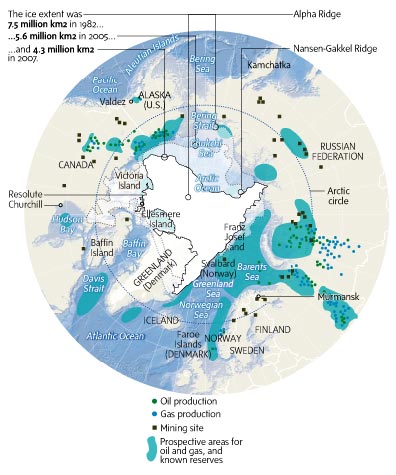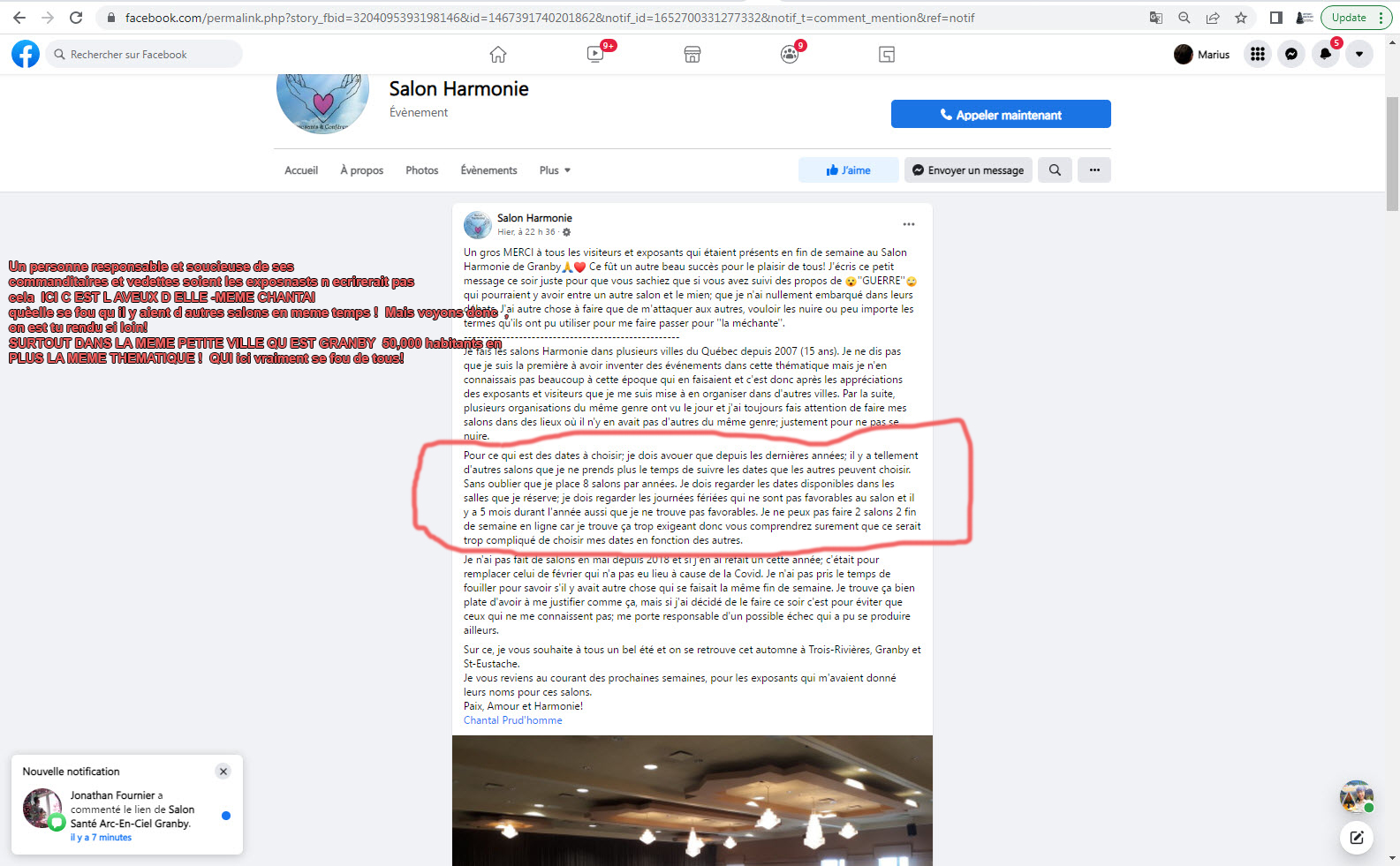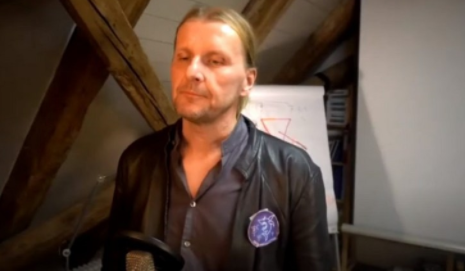
The Arctic is now in the spotlight. A recent BBC report tells how China, describing itself as a “near-Arctic state”, and facing rejections in Europe, is deepening ties with Russia, which “controls a whopping half of the Arctic shoreline”, and is also collaborating militarily with Beijing in that region, including joint patrols. Meanwhile, Oliver Dieckmann (independent China policy analyst writing for The Diplomat) argues that Sino-Russian Arctic collaboration should not be underestimated.
That region, once a frozen frontier of limited geopolitical significance, is rapidly emerging as a theater of great power competition, where melting ice unveils vast resources and also escalating tensions. With reports that Moscow and Beijing will conduct annual naval exercises in the Arctic, one should expect Sino-Russian drills in the area in the next months, likely near the strategically vital Northern Sea Route. These drills, which reportedly began with the large-scale “Ocean-24” exercise in September 2024, spanning the Pacific and Arctic Oceans, underscore a deepening partnership between Moscow and Beijing. One may recall that this collaboration extends beyond military exercises, with Russia and China agreeing to establish a joint commission to develop the Northern Sea Route, a move that directly challenges Western ambitions in the Arctic.
While earlier Russian-Chinese joint exercises, such as those in 2022 and 2023 near Alaska (e.g., Northern/Interaction 2023), included Arctic-adjacent areas like the Bering Sea, they were not strictly Arctic-focused. The 2024 exercise marked a clear shift toward direct Arctic collaboration, and that is a huge development.
I’ve been writing on NATO’s ambitions to militarize the Arctic since 2021. The further increase in Chinese-Russian activity in that region in 2024 is, in a lot of ways, a response to the Atlantic Alliance’s growing Arctic presence. More recently, according to Mathieu Boulègue (a Global Fellow at the Wilson’s Center Polar Institute),
“Finland’s and Sweden’s accession to NATO is making Russia feel more vulnerable from a military point of view… This self-perception of vulnerability will inform how Russia projects itself in the region… [this] raises the risk of miscalculation and escalation in a changing Arctic.”
One should also keep in mind that Washington has claimed a large portion of the ocean floor, spanning from the Gulf of Mexico to the Arctic itself (in a move still under Biden). This underreported unilateral grab, disregarding international norms as this does, underscores an expansionist approach, aiming to assert control over resource-rich maritime territories in a strategically critical region. And Trump is expanding on that same logic, with his Greenland and Canada threats.
Canada itself, meanwhile, is bolstering its Arctic presence with plans for a new military base in Iqaluit and two additional naval icebreakers.
The Arctic’s allure lies, among other things, in its untapped wealth. The US Geological Survey estimates the region holds 90 billion barrels of undiscovered oil and 30% of the world’s undiscovered natural gas, alongside vast mineral deposits critical for modern technology. As climate change accelerates ice melt, these resources become increasingly accessible, further transforming the Arctic into a geopolitical hotspot.
Russia, with its extensive Arctic coastline and a fleet of over 40 icebreakers (including eight nuclear-powered ones), is well-positioned to take advantage of these opportunities. China, branding itself a “near-Arctic nation,” has its own projects, encapsulated in its 2018 “Polar Silk Road” white paper, which envisions the Arctic as a key shipping route complementing its Belt and Road Initiative. This vision, however, clashes with Western interests, particularly as the Northern Sea Route offers a shorter trade corridor between East Asia and Europe—potentially cutting transit time by 60% compared to traditional routes like the Suez or Panama Canals.
Simply speaking, the Russia-China partnership in the Arctic is a direct challenge to Western hegemony. Russia’s military moves, coupled with joint drills with China, signals a readiness to project power and a response to the aforementioned NATO’s Arctic expansion. Moscow’s investment in weapons, like the Kinzhal and Tsirkon, suggests their potential use in Arctic drills to demonstrate technological superiority. Icebreakers, a cornerstone of Moscow’s Arctic strategy, were likely featured in “Ocean-24” and will continue to play a pivotal role, enabling year-round navigation and military operations in harsh conditions. Beijing in turn, though lagging in icebreaker technology, is pursuing its own nuclear-powered vessels to keep pace.
Thus, the Arctic is no longer a peripheral concern but a focal point of great power rivalry. NATO’s response, driven by fears of Russia’s drone and missile capabilities along the Northern Sea Route, includes developing Arctic-capable drones and bolstering surveillance. The US, despite lagging with only a handful of icebreakers, is pushing for a stronger presence, with President Trump’s controversial Greenland acquisition plans highlighting the region’s strategic importance for missile defense and anti-submarine operations. Canada’s under-ice surveillance expansion, though modest, aims to monitor Russian and Chinese submarine activity, a critical concern given the Arctic’s role as the shortest route for missiles between the Russian Federation and North America.
The Russia-China partnership in the Arctic can potentially reshape global trade and security dynamics. The Northern Sea Route, with a large Russian presence and bolstered by Chinese investment, could undermine US influence over traditional maritime chokepoints like the Strait of Malacca or Suez Canal.
The Arctic’s melting ice is thus not just revealing resources but exposing fault lines in global power structures. While Ukraine and Taiwan dominate headlines, the High North is quietly becoming a crucible for great power competition. NATO’s increased presence, Canada’s belated investments, and the Russia-China naval drills signal a region on the brink of heightened tensions. As icebreakers carve new paths and hypersonic missiles loom as potential game-changers, the Arctic, as an emerging frontier, demands urgent attention—one should expect developments in that region to shape the geopolitical landscape for decades to come.
*
Click the share button below to email/forward this article. Follow us on Instagram and X and subscribe to our Telegram Channel. Feel free to repost Global Research articles with proper attribution.
This article was originally published on InfoBrics.
Uriel Araujo, PhD, is an anthropology researcher with a focus on international and ethnic conflicts. He is a regular contributor to Global Research.
Featured image is from Rosatom via High North News
Global Research is a reader-funded media. We do not accept any funding from corporations or governments. Help us stay afloat. Click the image below to make a one-time or recurring donation.


.png) 1 month_ago
11
1 month_ago
11



























 French (CA)
French (CA)